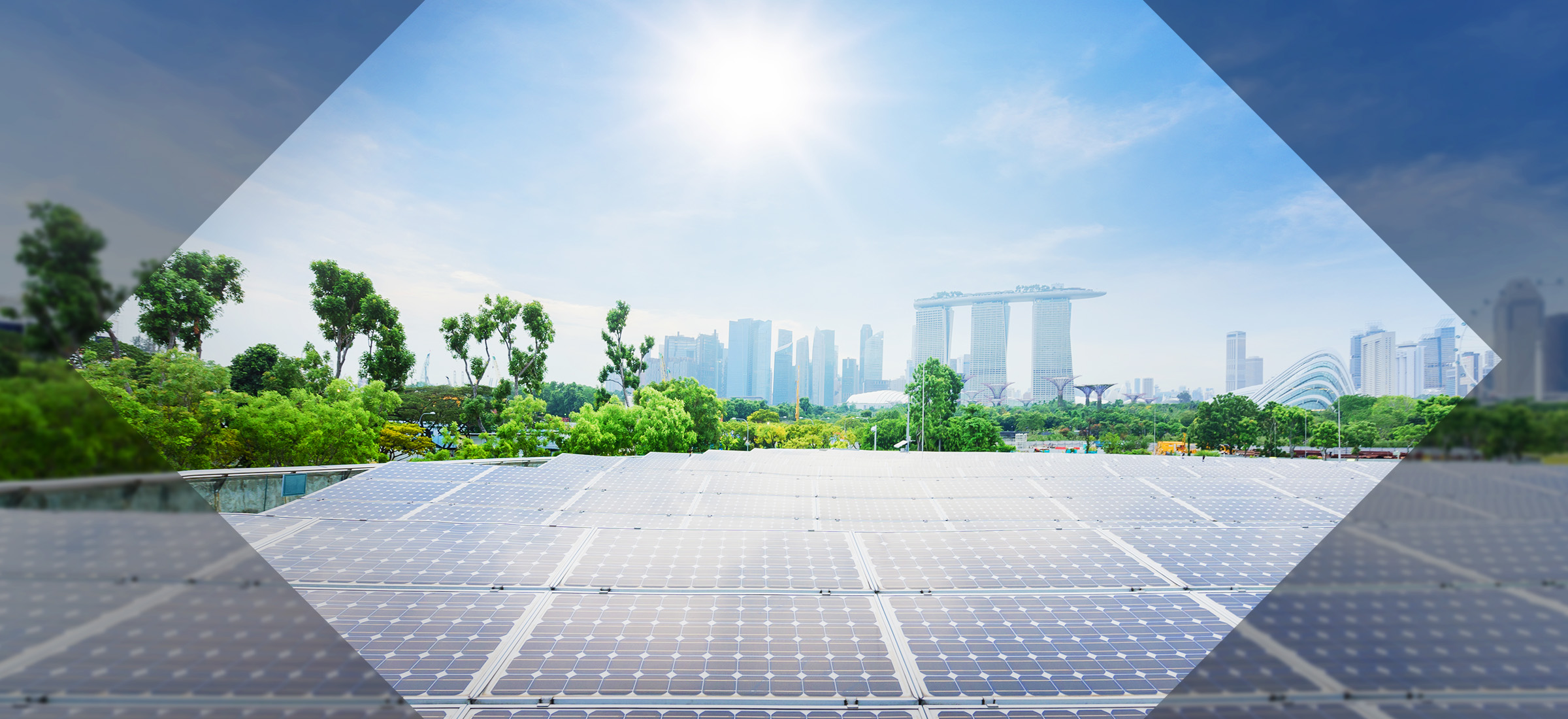How Private Credit Is Fueling Asia's Energy Transition
Produced in partnership with Bloomberg Media Studios.
Global investment in the low-carbon energy transition exceeded $2 trillion for the first time in 2024, with almost 90% directed at renewable energy sources, power grids, and electrified transport.
However, Asia, which accounts for more than half of global energy consumption, is experiencing slower renewable energy investment growth as it balances decarbonization with the need for reliable and affordable power. Despite advancements in cost-effective low-carbon technologies like solar, wind, and electric vehicles, the region remains heavily reliant on fossil fuels, particularly coal. This is exacerbating the challenge of meeting national climate targets for many Asian countries, especially emerging markets.
Bridging the transition investment gap
A critical step in scaling renewable energy in Asia is securing the initial capital investment required for associated infrastructure. Although these projects often demand substantial upfront funding, they deliver long-term benefits, including sustainability, enhanced energy security, and economic growth. Unlike fossil fuel-based energy projects, which rely on conventional financing channels, renewable energy projects present an opportunity to innovate and create new financial models aligned with climate goals—a critical consideration given that parts of Asia are among the regions most vulnerable to climate change.
The scale of the investments and the complexities involved—evolving technologies, complex financing structures, longer payback periods, and varying regulations and policies across markets—make it difficult for traditional lenders to meet all the financing needs of today’s renewable energy projects.
This has opened the door for alternative financing options, such as private credit, which involves loans or debt financing from non-bank lenders like hedge funds and asset management firms.
“Private credit is particularly well-suited to renewable energy infrastructure due to its flexibility,” says Scott McClurg, Head of Private Credit at HSBC Asset Management.
“Historically, infrastructure has been dominated by large country-scale projects. However, the current transition requires more localized investments, typically ranging from $40 million to $250 million. This shift towards smaller projects has created a gap, as banks are geared towards larger deals.”
Private credit as a transition catalyst
Private credit enables borrowers to swiftly access financing solutions tailored to the unique needs of individual infrastructure projects. For example, private credit investors may provide convertible debt that transitions into equity if a project achieves certain milestones.
These investors often focus on early-stage and innovative clean energy initiatives. They evaluate project risks by analyzing factors such as technology reliability, developer track record, execution challenges and regulatory compliance. This targeted approach enables them to support promising ventures that might otherwise struggle to secure traditional financing.
“We assess whether a project has proven technology, whether the backers have the expertise to execute successfully, and whether there is sufficient liquidity to absorb potential delays,” says McClurg.
“We hire professionals with infrastructure investment experience—people who understand how to structure deals and collaborate with developers to make projects investment-ready. This process typically takes six to nine months to secure financing that aligns with both project needs and investor expectations.”
McClurg emphasizes that private credit is pivotal in this context, as it reduces both liquidity risk and complexity for investors.
“This approach has already proven effective in other global markets. From an Asian perspective, the potential is enormous,” he says.
Key players driving private credit in Asia
Private credit investors don’t operate in isolation. In Asia, institutions like the Asian Development Bank (ADB) and the International Finance Corporation (IFC) play a vital role in mobilizing private capital for the region’s clean energy sector. For example, they leverage blended finance, concessional loans, and guarantees to mitigate risks, making renewable energy projects more compelling for institutional investors.
Institutions like the ADB also support governments with regulatory reforms, technical assistance, and the development of public-private partnerships to enhance project viability and long-term sustainability.
Where the investment is going
Private credit investment in Asia’s energy transition mainly targets utility-scale solar and wind projects, particularly in China, Indonesia, and Vietnam, where ambitious renewable energy goals are driving demand.
Grid modernization is also a priority across the region, ensuring the seamless integration of these renewable energy sources. At the same time, energy storage solutions—such as battery projects—are being installed to enhance grid stability and mitigate the intermittency of solar and wind power.
McClurg believes the more successful privately financed energy projects are often simple. He highlights localized community generation projects where renewable energy sources are paired with storage as an effective model.
“The combination of on-site generation and storage is not overly complex, and it is a proven and highly scalable solution, making it a bright opportunity in the sector,” he says.
Microgrids deployed across the Philippines exemplify this approach. These systems integrate small-scale solar panels with battery storage and smart distribution technology to deliver reliable power to remote or underserved communities.
Scaling the opportunity
While banks remain the dominant source of financing across Asia, private credit has emerged as a crucial and innovative tool to bridge the region’s energy transition funding gap. This is particularly critical in emerging markets, where traditional financing options are often scarce or inadequate to support the growing demand for sustainable energy projects.
The current macroeconomic landscape is reinforcing this shift; with interest rates and inflation expected to remain high compared to historical levels, investor appetite for cash-flow-generating assets with inflation protection is likely to persist. These factors align with HSBC Asset Management’s ambition to raise up to $1 trillion in sustainable finance and investment by 2030.
“We want to play our part, and the scale of the transition opportunity—particularly in providing private credit financing solutions for these projects—is significant,” says McClurg.




